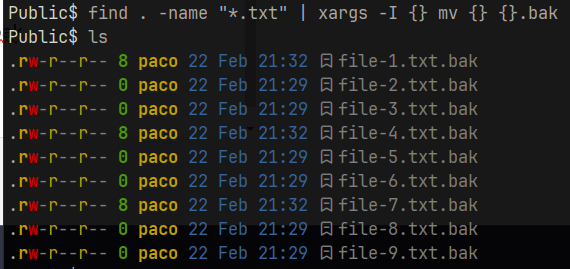Introduction
The xargs command in Linux is a powerful tool that allows you to run commands based on input from another command. It is often used in conjunction with other commands such as find, grep, and ls to perform operations on a large number of files or data. In this blog, we'll explore some of the key features and benefits of xargs and provide some examples to demonstrate its usage.
Basic Usage of xargs
The basic usage of xargs is to pass the output of one command as input to another command. For example, you can use the following command to delete all .txt files in the current directory:
find . -name "*.txt" | xargs rm
Here, find is used to search for all .txt files, and xargs takes the output of find and passes it as input to rm, which deletes the files.
Adding Command Options with xargs
xargs also allows you to add options to the commands it runs. For example, you can use the following command to list all .txt files in the current directory with their full path:
find . -name "*.txt" | xargs ls -l
Here, -l is an option for the ls command, and xargs adds it to the ls command when it runs.
Using xargs with find and grep
One of the most common use cases for xargs is to run commands based on the output of find and grep. For example, you can use the following command to find all .txt files in the current directory containing the word "example":
find . -name "*.txt" | xargs grep -l "example"
Here, grep is used to search for the word "example" in each .txt file, and xargs takes the output of grep and passes it as input to the -l option, which only lists the file names, not the matching lines.
Using xargs with -I Option
The -I option allows you to specify a placeholder in the command line that xargs will replace with the input. For example, you can use the following command to rename all .txt files in the current directory with the .bak extension:
find . -name "*.txt" | xargs -I {} mv {} {}.bak
Here, -I {} specifies that the input from find will replace {} in the mv command, which renames the files.
Conclusion
In conclusion, xargs is a powerful tool in the Linux command line that allows you to run commands based on input from another command. Whether you're working with find, grep, or any other command, xargs can greatly simplify your workflow and help you automate repetitive tasks. Try incorporating xargs into your daily Linux routine, and you'll quickly discover its many benefits.
Thank you for reading 🧑💻
Stay tuned for more 🚀
✌️ and logout













Latest comments (0)